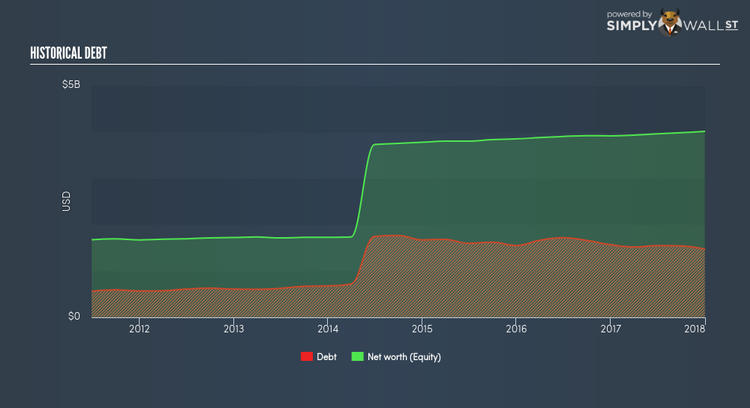Financial Metrics For Umpqua Holdings Corporation (NASDAQ:UMPQ)

Umpqua Holdings Corporation’s (NASDAQ:UMPQ) profitability and risk are largely affected by the underlying economic growth for the region it operates in US given it is a small-cap stock with a market capitalisation of US$4.79B. Given that banks operate by reinvesting deposits in the form of loans, negative economic growth may lower the level of saving deposits and demand for loans, directly affecting those banks’ levels of cash flows. Following the Financial Crisis in 2008, a set of reforms termed Basel III was enforced to bolster risk management, regulation, and supervision in the financial services industry. These reforms target bank level regulation and aims to improve the banking sector’s ability to absorb shocks arising from economic stress which could expose financial institutions to vulnerabilities. Its financial position may weaken in an adverse macro event such as political instability which is why it is crucial to understand how well the bank manages its risks. Sufficient liquidity and low levels of leverage could place the bank in a safe place in case of unexpected macro headwinds. Today we will be measuring Umpqua Holdings’s financial risk position by looking at three leverage and liquidity metrics. Check out our latest analysis for Umpqua Holdings
Why Does UMPQ’s Leverage Matter?
Banks with low leverage are better positioned to weather adverse headwinds as they have less debt to pay off. A bank’s leverage may be thought of as the level of assets it owns compared to its own shareholders’ equity. While financial companies will always have some leverage for a sufficient capital buffer, Umpqua Holdings’s leverage ratio of 6x is very safe and substantially below the maximum limit of 20x. This means the bank exhibits very strong leverage management and is well-positioned to repay its debtors in the case of any adverse events since it has an appropriately high level of equity relative to the debt it has taken on to remain in business. Should the bank need to increase its debt levels to meet capital requirements, it will have abundant headroom to do so.
What Is UMPQ’s Level of Liquidity?

Due to its illiquid nature, loans are an important asset class we should learn more about. Usually, they should not be higher than 70% of total assets, however its current level of 73.58% means the bank has lent out 4% above the sensible threshold. This level implies dependency on this particular asset class as a source of revenue which makes the bank more exposed to defaulting relative to banks with less loans.
Does UMPQ Have Liquidity Mismatch?
Banks profit by lending out its customers’ deposits as loans and charge an interest on the principle. Loans are generally fixed term which means they cannot be readily realized, however, customer deposits are liabilities which must be repaid on-demand and in short notice. The discrepancy between loan assets and deposit liabilities threatens the bank’s financial position. If an adverse event occurs, it may not be well-placed to repay its depositors immediately. Compared to the appropriate industry loan to deposit level of 90%, Umpqua Holdings’s ratio of over 94.94% is higher which places the bank in a relatively dangerous territory to go into negative discrepancy in liquidity. Essentially, for $1 of deposits with the bank, it lends out more than $ 0.9 which is risky.
Next Steps:
We’ve only touched on operational risks for UMPQ in this article. But as a stock investment, there are other fundamentals you need to understand. Below, I’ve compiled three pertinent aspects you should further research:
Future Outlook: What are well-informed industry analysts predicting for UMPQ’s future growth? Take a look at our free research report of analyst consensus for UMPQ’s outlook.
Valuation: What is UMPQ worth today? Has the future growth potential already been factored into the price? The intrinsic value infographic in our free research report helps visualize whether UMPQ is currently mispriced by the market.
Other High-Performing Stocks: Are there other stocks that provide better prospects with proven track records? Explore our free list of these great stocks here.
To help readers see pass the short term volatility of the financial market, we aim to bring you a long-term focused research analysis purely driven by fundamental data. Note that our analysis does not factor in the latest price sensitive company announcements.
The author is an independent contributor and at the time of publication had no position in the stocks mentioned.

